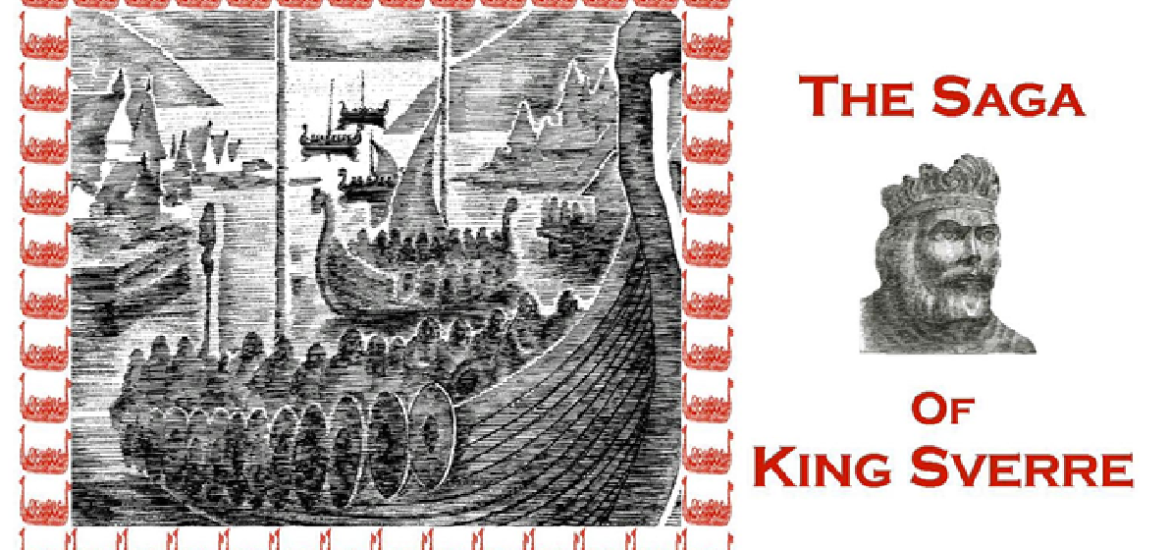The narrative in this book is a translation of an extract taken from Sverre’s Saga, an Icelandic saga written in the twelfth century. From the saga itself we get a picture of King Sverre (1177-1202) as having been the most colorful historical character of the Norwegian Middle Ages. The extract focuses mainly the Battle of Fimreite (1184), a sea battle fought between King Sverre and King Magnus, and the events immediately before and after.
The Battle of Fimreite is one of the most interesting events retold in the saga, and perhaps the most important in Sverre’s royal career. The battle illustrates Sverre’s skill as a military strategist. In the face of overwhelming odds (Magnus had twice as many ships as Sverre), and with his ships trapped in the fjord “like sheep in a pen,” Sverre nevertheless emerged victorious, and Magnus was killed along with 2000 of his men. The Battle of Fimreite is only one of the 15 sea-fights in which Sverre met and defeated a king in battle. Contemporary accounts also say that he must have used witchcraft to sink the ships of Magnus in Sognefjord, although Sverre himself attributed his success not to the Devil, but to divine intervention.
The first part of Sverre’s Saga was written by the Icelandic abbot, Karl Jònsson, in 1185-1188, under Sverre’s personal supervision; according to the saga, “King Sverre sat over him and settled what he should write.” Sverre’s supervision of the writing provides the reader with a uniquely privileged first-hand historical account. It is, as a result, highly subjective and unreliable from a historian’s point of view, yet all the more interesting and colourful read as a literary work. In this extract Sverre portrays himself through the abbot’s pen as a brave and wise man; one who showed mercy to his defeated enemies, and one of self-humour and irony, at one point describing himself as “a little low man from an outlying island.” He is presented as a military strategist, propagandist, and a man with great oratorical skills and leadership qualities. He was candid and pleasant towards his subordinates and treated them fairly and with respect. Prior to battle he would discuss strategy with his men, and inspire them to battle by saying that “He who kills a lord, shall himself be a lord.” Sverre’s noble qualities are made all the more apparent by the way in which he is contrasted with King Magnus, who is alleged to have shown no mercy towards Sverre’s men, the Birkebein (Birchlegs), leaving their slain bodies to the “raven and the dog,” and who failed to follow the advice of the men under him before the Battle of Fimreite, thus leading to his own demise.
To download full document click on the Download Button.

